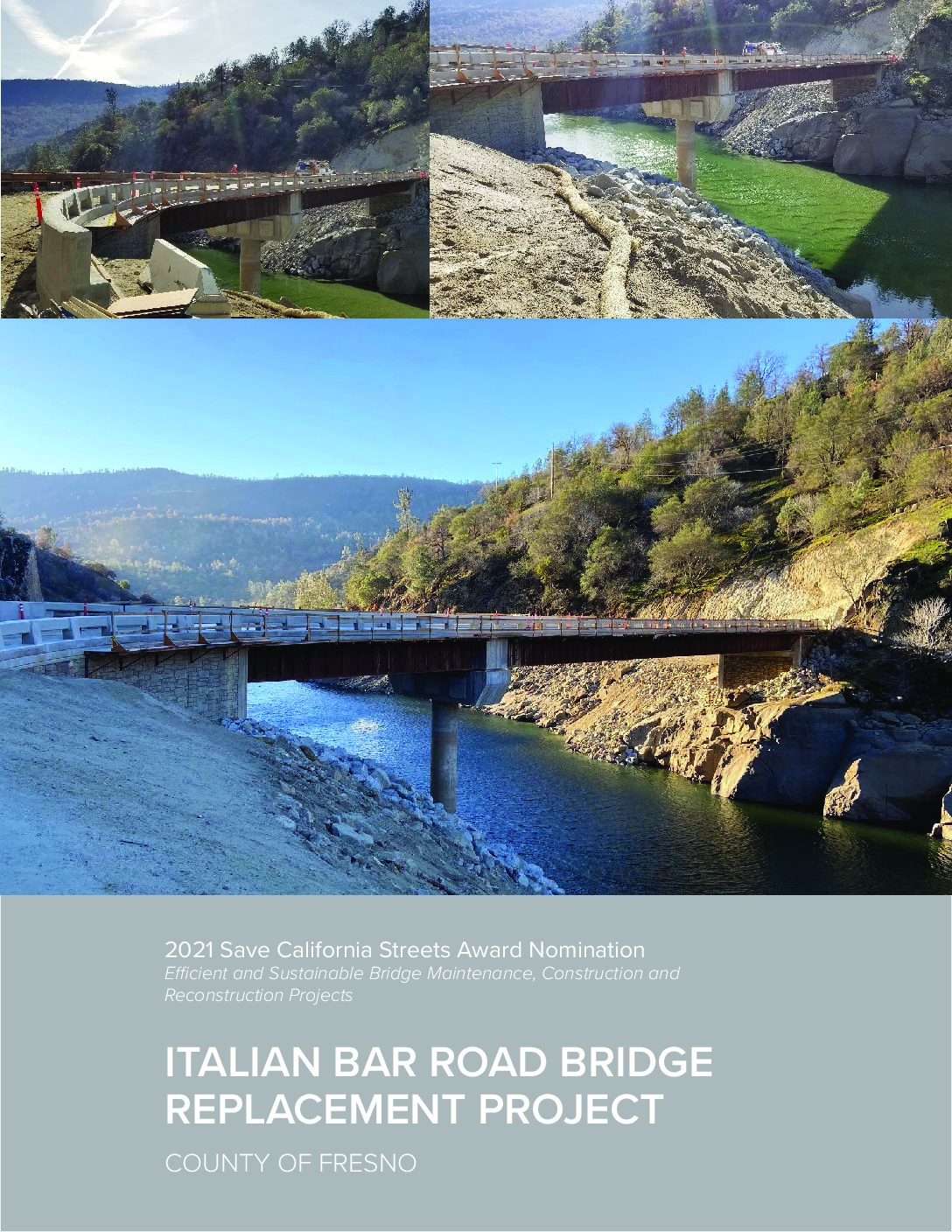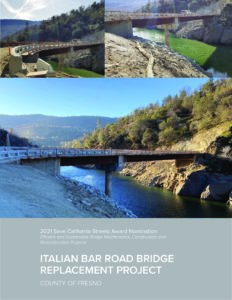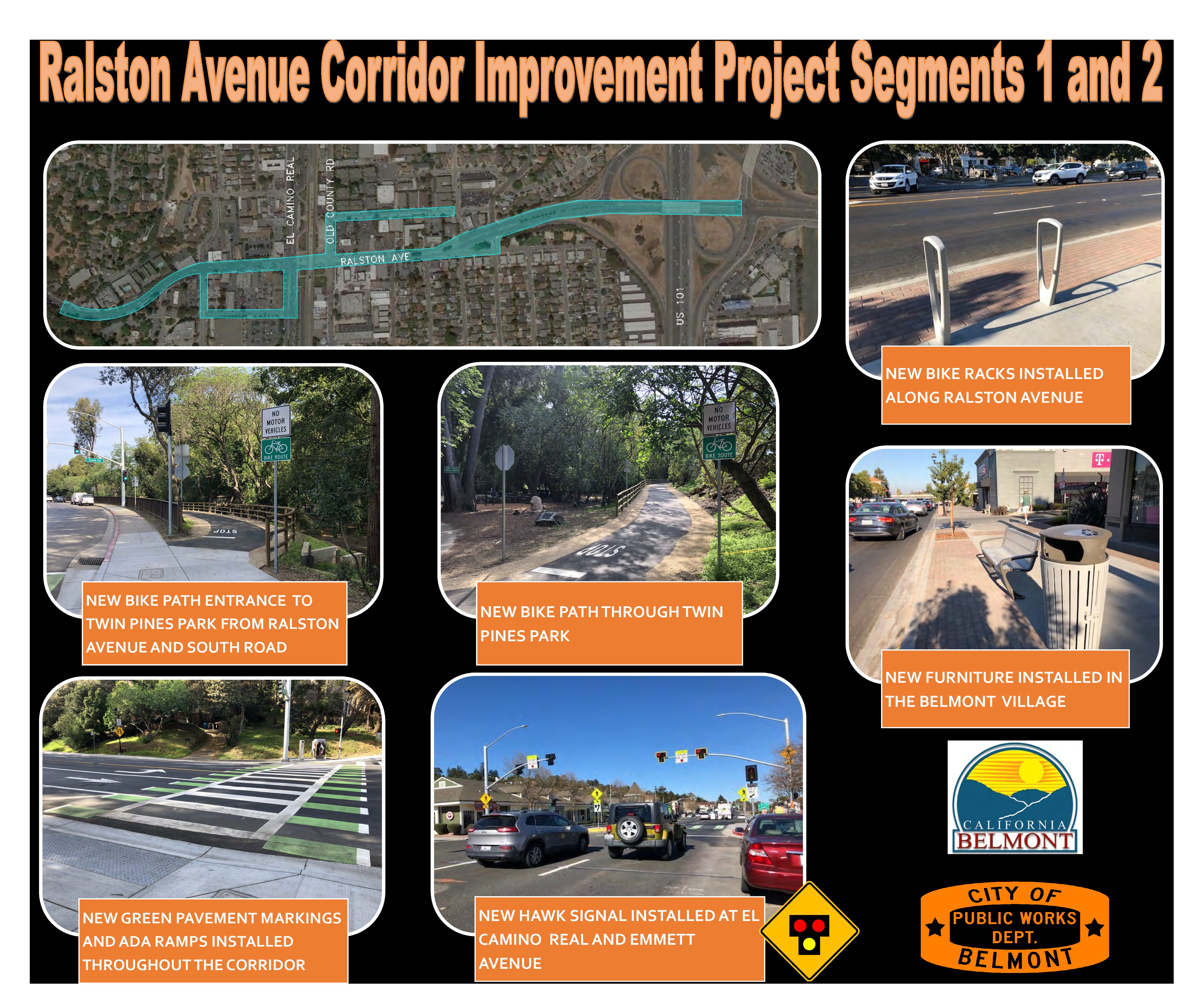Italian Bar Road Bridge Replacement
Location
Italian Bar Road over the San Joaquin River in Fresno County
City or County Responsible for Project
County of Fresno
Category
Bridge: Efficient and Sustainable Bridge Maintenance, Construction and Reconstruction Projects
Author
Joseph Harrell, PE
County of Fresno Department of Public Works and Planning, Design Division/Bridges
2220 Tulare Street, 7th Floor, Fresno, CA 93721
559-600-4534
Project Description
The historic San Joaquin River Bridge on scenic Italian Bar Road was constructed in 1927 as part of the Big Creek Hydroelectric System. The bridge, located in Fresno County, spans what historians have dubbed “The Hardest Working Water in the World” due to the intricate multi-dam system used for generating electricity. Redinger Lake is part of the Big Creek Hydroelectric project which includes a system of lakes, tunnels, steel penstocks and power houses that uses water to generate electricity. The original bridge was a 98-foot-long, single-span steel Pratt pony through-truss with timber stringers and rolled steel floor beams crossing the natural course of the San Joaquin River. In 1950, the original bridge was raised onto new piers and the overall length was increased to 241 feet long by adding four additional approach spans. This was done to accommodate the rising water levels of Redinger Lake prior to the construction of Big Creek Dam Number 7, and has since served residents, recreationalists, and power plant employees. In 2013, Fresno County determined the historic bridge had reached the end of its service life and could no longer safely support daily traffic. The County partnered with Quincy Engineering to replace the bridge. The team performed an extensive analysis of existing bridge deficiencies and conditions and worked closely together to evaluate cost-effective replacement bridge types and span configurations that would accommodate the site’s unique constraints. The project design was more challenging due to the unique nature of the site. The bridge is located in a remote area on the border between Fresno and Madera Counties in a rocky ravine with narrow roads and tight curves. Several trucking routes and staging areas were evaluated to physically deliver material and equipment for construction and identify environmental issues beyond the bridge itself. This also resulted in the strengthening of another existing bridge en route to the site. The limited access controlled the bridge type selection and the impact to project funding had to be secured through the Highway Bridge Program. Fortunately, most of the affected land was managed by the U.S. Forest Service. They provided essential assistance throughout design and construction. The County and Southern California Edison required that the existing bridge remain open during construction of the replacement bridge. The design challenge of keeping the road open required careful planning to strike a balance between the impacts to traffic during construction and the cost of realigning Italian Bar Road into the steep, solid granite banks. The final design provided an alignment downstream of the existing bridge minimizing the rock cuts and using staged retaining walls to keep the existing bridge in place for through traffic. Concrete stamping, staining, and manufactured stone veneer were added for aesthetic appeal that helped blend the new bridge with the landscape. Ultimately, Fresno and Mader




Add Comment